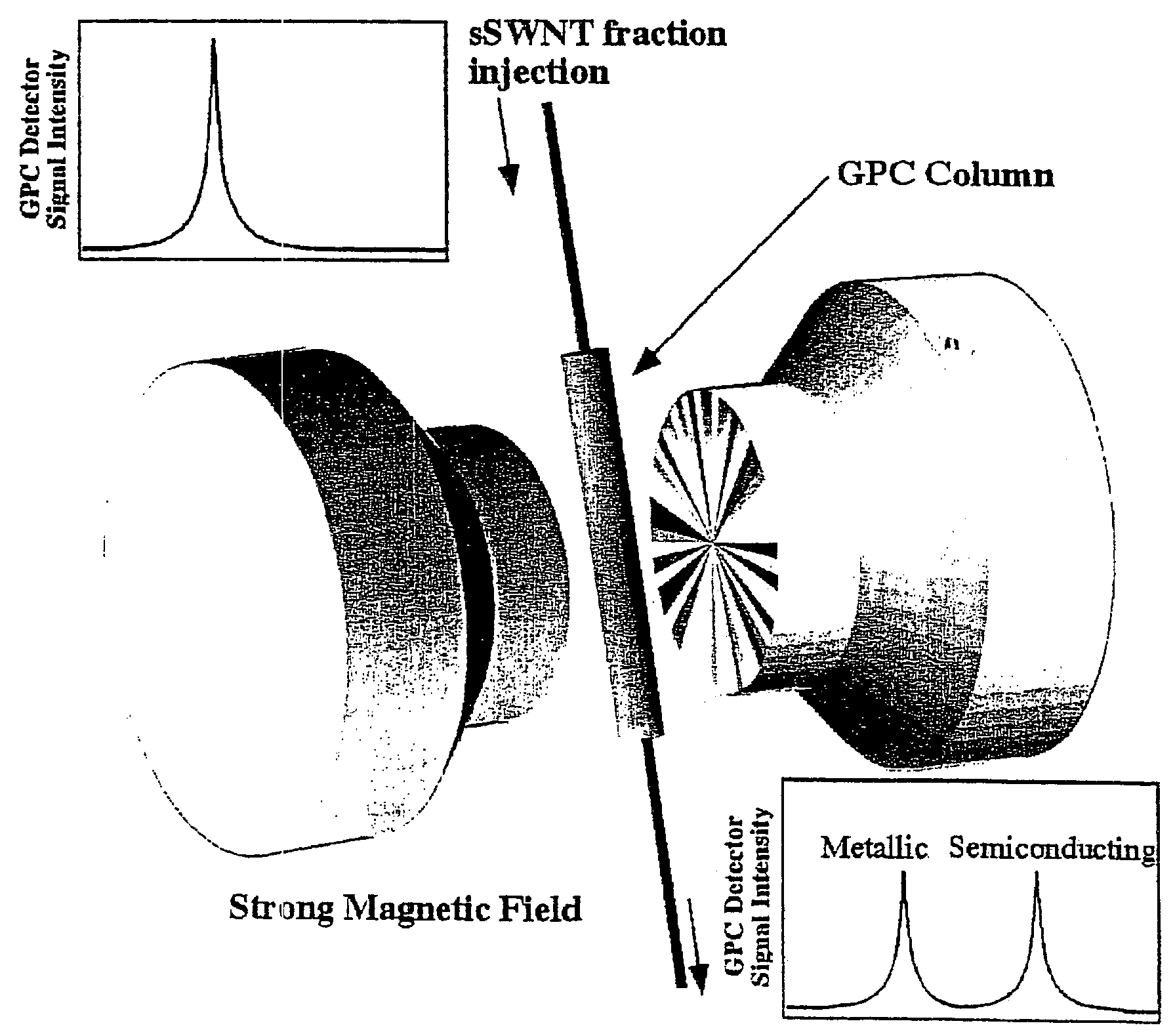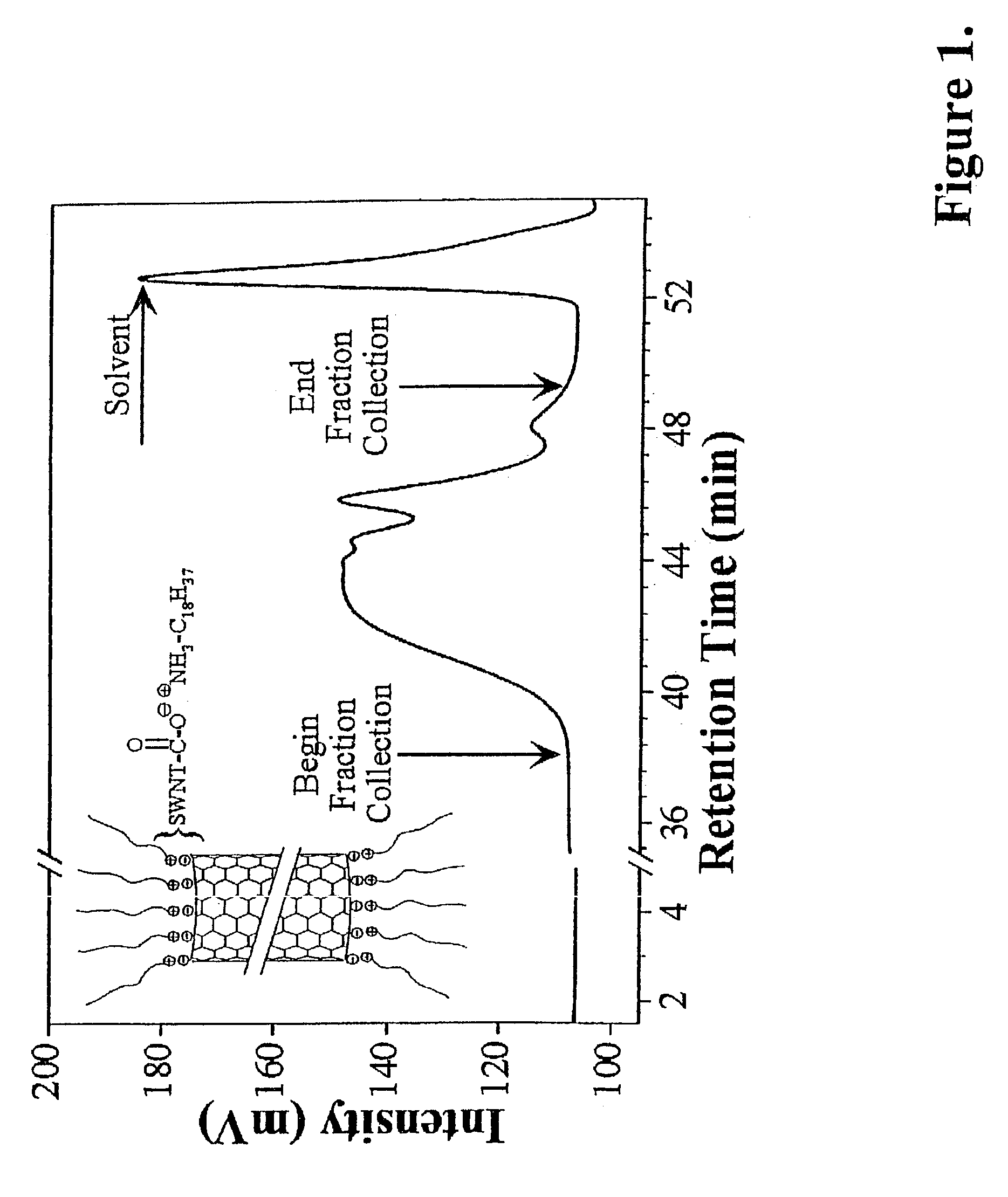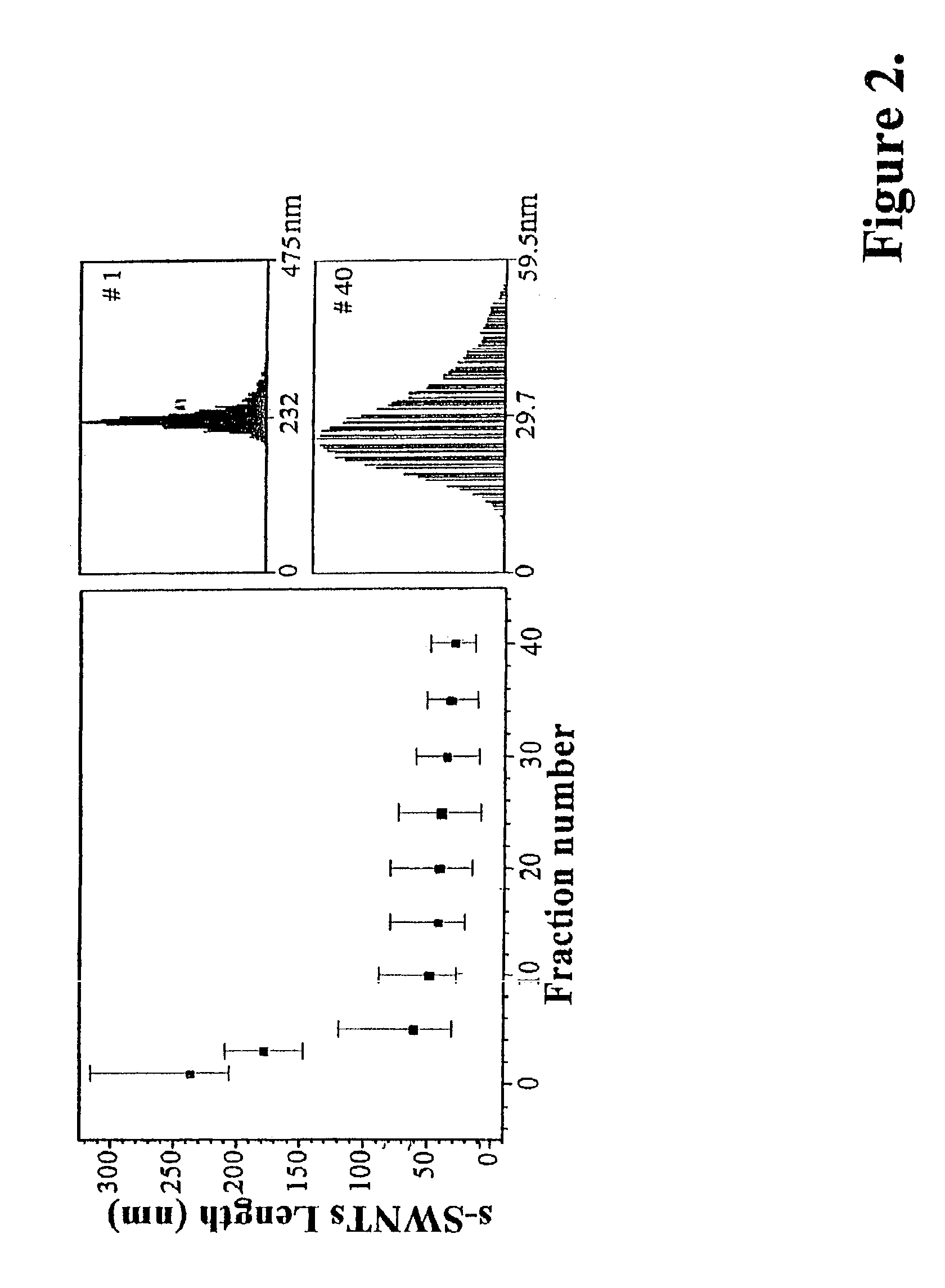Separation of single wall carbon nanotubes
a carbon nanotube and single-walled technology, applied in the field of carbon nanotube size and or type separation, can solve the problems of lithographic patterning cost and size limitations of traditional materials, and the roadblock of engineering devices with features below 100 nanometers, and the lack of uniformity of swnts in synthesized populations,
- Summary
- Abstract
- Description
- Claims
- Application Information
AI Technical Summary
Benefits of technology
Problems solved by technology
Method used
Image
Examples
example 1
Chromatography and Length Distribution of SWNTs
[0031]Purified SWNTs (commercially available from tubes@rice) were acid functionalized and shortened by sonicating in a mixture (7:3) of HNO3 and H2SO4 (Thess et al., Science 273, 483, 1996). The carboxy-terminated shortened SWNTs (sSWNTs) were zwitterion-functionalized with octadecylamine (ODA) according to previously established procedures Chen et al., Science 282: 95, 1998; Chen et al., J. Phys. Chem. B 105: 2525, 2001). 100 μl of the sSWNTs-zwitterion complex in tetrahydrofuran (THF) was injected into a Waters 150-C Plus GPC (Ultrastryragel columns, with THF as the mobile phase). A total of 40 fractions were collected (1 fraction every 15 seconds) during the elution of the broad multi-modal band shown in the chromatogram of FIG. 1. sSWNTs were found to be present in all 40 elution fractions, as monitored by UV-Vis, near IR (NIR) and Raman spectroscopy (Rao et al., Science 275: 187, 1997). Atomic force microscopy (AFM) was used to ob...
example 2
Characterization of Eluting Fractions
[0032]Dissolution of ODA-functionalized SWNTs in THF has been demonstrated, where the majority of the bundles were exfoliated in small ropes (2–5 nm in diameter) and a limited amount of individual nanotubes (Chen et al., J Phys Chem B 105, 2525, 2001). Assuming the dissolution is a result of the repulsive interaction induced by the ionically attached ODA end-groups, in the case of shortened-SWNTs, the flow-induced shearing through the GPC columns could further reduce aggregation and lead to length fractionation. The UV-Vis spectrum of a typical eluting fraction of sSWNTs in THF is presented in FIG. 3. This spectrum markedly contrasts that of the injected suspension (FIG. 3 inset), which was obtained after extensive sonication in THF and filtration through a 10 μm Teflon™ filter. The profound difference in these two spectra might originate from either the complete exfoliation of the 2–5 nm diameter SWNTs ropes, or from the fractionation by length ...
example 3
Enrichment for Metallic or Semiconducting SWNTs
[0036]The significant strain energy associated with small diameter and structural instability associated with varying helicity of SWNTs have also allowed us to preferentially enrich different fractions with either metallic or semiconducting nanotubes during the oxidative shortening of SWNTs a mixture (7:3) of HNO3 and H2SO4. FIG. 6 illustrates the NIR spectra of various elution fractions as collected from the GPC column (i.e. with no further solvent (THF) dilution or concentration). The pronounced increase in intensity of the 1920 nm absorption (which unambiguously corresponds to the first pair of singularities for the 1.22 and the 1.33 nm diameter semiconducting SWNTs) as a function of elution fractions (FIG. 6, inset) indicates that shorter nanotubes are enriched in S-SWNTs.
[0037]The enhanced nanotube solubility, argued above, permits us also to probe the concentration profile of metallic SWNTs in different elution fractions. FIG. 7 s...
PUM
| Property | Measurement | Unit |
|---|---|---|
| size | aaaaa | aaaaa |
| diameter | aaaaa | aaaaa |
| diameter | aaaaa | aaaaa |
Abstract
Description
Claims
Application Information
 Login to View More
Login to View More - R&D
- Intellectual Property
- Life Sciences
- Materials
- Tech Scout
- Unparalleled Data Quality
- Higher Quality Content
- 60% Fewer Hallucinations
Browse by: Latest US Patents, China's latest patents, Technical Efficacy Thesaurus, Application Domain, Technology Topic, Popular Technical Reports.
© 2025 PatSnap. All rights reserved.Legal|Privacy policy|Modern Slavery Act Transparency Statement|Sitemap|About US| Contact US: help@patsnap.com



